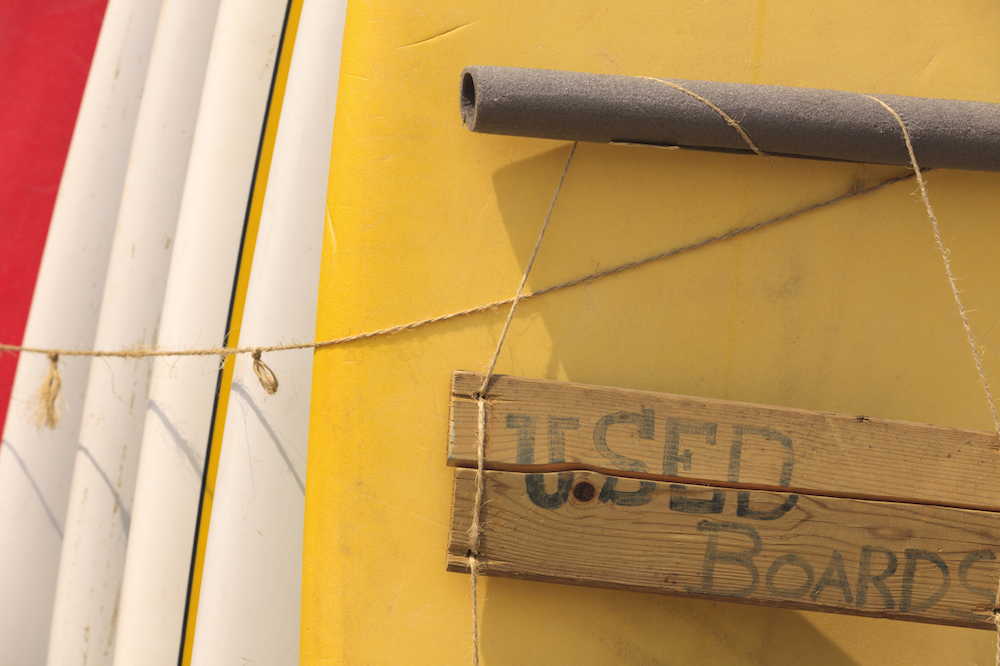There are thousands of poor, unloved, discarded secondhand surfboards crying out for a kind master and a new home. Some are battered, bruised, unsightly things, but others remain in fine fettle and have many good years ahead of them; perfectly good used surfboards can be picked up at remarkably cheap prices.
Where to buy a secondhand surfboard?
Secondhand surfboards can either be bought direct from the owner, from a surf shop, or from the factory or showroom of a surfboard shaper/brand.
These days the internet’s the best place to look for private sales. Sites like Ebay and Gumtree can yield good deals, as can local Facebook groups, but even better are surf-specific secondhand websites, such as Surfvault, a free-to-use community for buying and selling surfing equipment online.
Surf shops, which often have a whole rack dedicated to used surfboards, generally act as intermediaries between the customer and the surfboard’s owner, who leaves the surfboard in the surf shop’s care. You may pay slightly more on average, but you’re probably less likely to get ripped off. You also have the benefit of being able to inspect the surfboards in person and to discuss your purchase with the shop staff.

Lastly, surfboard brands often have a selection of second-hand surfboards for sale at the showroom or factory. Some may have been returned by regular customers in part exchange for new surfboards; others may have belonged to surfers on the brand’s roster of pro riders. Be careful when considering a surfboard that used to belong to a pro, as it’s unlikely to be well-suited to your surfing; not only will it probably have a light and therefore fragile glass job, but it’s been specifically designed for a very advanced surfer.

